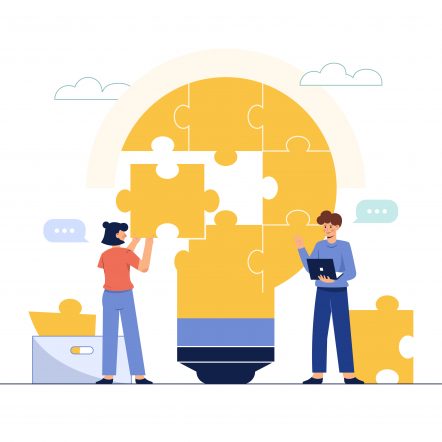Dr.Vivekananth Padmanabhan|HOD-IT|Learning Skills Trainer
Imagine you are sitting at the riverside with a group of friends, and you see children in the river struggling for life. Each one of you is saving a child, but more and more children are in the river struggling for life, and one of your friends is asking this critical question: “Who the hell is pushing the children into the river?” He says that we need to find that person and stop him from doing that!
What happened?
Your friend moved from downstream to upstream thinking.
There are two ways of solving a problem: downstream and upstream.
Downstream is striving to find out methodologies to solve a problem after it has occurred (similar to our previous example of saving drowning children).
Upstream is the process of not only solving the problem but also preventing the problem from occurring later (our example of preventing the person from throwing the children in the river).
The typical problem solving is all about moving downstream: customers are complaining of service, have a customer care executive deal with that, marriage is a problem due to conflicts, resolve it by talking or seeing a lawyer for a divorce, your child has failed in a subject, and arrange tuition for that subject.
There is nothing wrong with the downstream problem-solving approach, and some situations demand downstream as an immediate solution, but in the long term, downstream approaches do not work and are just short-term fixes. Customers are complaining because the quality of service may be bad. It is better to prevent the conflicts all together before they escalate to divorce. It is better to mentor your child and find out his or her strengths before he or she fails in a subject.
Imagine that the house is being burgled and the person informs the police about the burglary, which is a typical downstream approach. The person may or may not get back the belongings. Is it possible to prevent burglary in the first place by having adequate precautionary and safety measures? (moving upstream) by having a good safety alarm and surveillance system in place. The person can still move upstream after a burglary by increasing the security measures rather than waiting for cops to recover the lost belongings.
Moving upstream has no limits; it boils down to the fact that upstream approaches may not show results immediately in certain situations. Imagine two traffic police officers: John and Daniel. John believes in downstream problem solving, and Daniel believes in the upstream approach. John finds out who is violating traffic rules and gives them the charge sheets, whereas Daniel tries to avoid traffic violations by being there physically on congested roads and reducing accidents and traffic violations. Who is more effective? Although John’s downstream strategy works in the short term, Daniel’s upstream strategy creates results in the long term.
Let’s analyze the health system. There is a saying “Prevention is better than cure”, Prevention is moving upstream, while cure is moving downstream. Eating healthier and doing daily exercise is a better strategy than taking medications for disease due to negligence.
Upstream problem solving is better in the corporate environment; for example, Expedia, an online travel agency based in the USA, received 20 million calls in 2012. It was estimated that 5 dollars per call and 100 million dollars are used per year. Dara Khosrowshahi, CEO of Expedia in 2012, assembled his team to come up with the right strategy. One of the team members was suggesting reducing the call time from 10 minutes to 4 minutes. The question that came up was, “Why 4 minutes?” Why not no minutes? The team was analyzing an upstream strategy of reducing the need for customer calls rather than the downstream approach of retraining the customer call executive to handle customers’ calls. (Dan Heath,2020).
The Expedia team created an online tool that can handle most of the customer requests, an automated voice-based response system, for example “Press 2 to get the itinerary”. The result was nothing more than sensational; the percentage of customers that called Expedia decreased from 58% to 15%. This example shows that corporate companies need a long-term upstream problem-reducing approach apart from a short-term problem-solving approach.
Any problem, whether it is a personal or professional problem, has two types of problem-solving approaches.
Although the downstream approach will temporarily resolve the issue, the upstream approach will solve the problem permanently.
Reference:
1. Upstream: The Quest to Solve Problems Before They Happen, March 3, 2020, by Dan Heath







